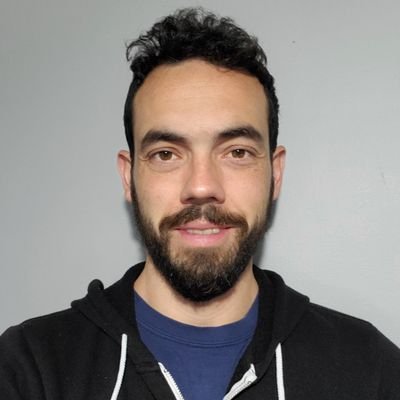
Connect with me below!
Sebastian Castro
I am a multidisciplinary engineer passionate about robotics, education, and software. Prior to transitioning to software engineering, my background was in training and education marketing.
I am also a multicultural engineer; I was born in Chile and grew up in Jamaica before coming to the United States for university and my professional career.
Given the above, I am unequivocally a proponent of diversity, equity, and inclusion in the workforce. If you come from an underrepresented or non-traditional background, I would be happy to mentor you as my time allows.
My personal interests include running, consuming and delivering educational content, and listening to a wide variety of music — recorded and live — with a soft spot for metal 🤘.
Work Experience
Roboticist / Applied Scientist @ Robotics and AI (RAI) Institute (2024 – Present)
I am working on composition of learned dexterous manipulation skills. Essentially, our team’s core is skill learning, but we are aiming to make robots highly capable in long-horizon tasks. My role is to supplement the researchers with good software development practices and architectural/algorithmic improvements that boost robot performance and research agility.
Senior Robotics Engineer @ PickNik Robotics (2022 – 2024)
I worked on the MoveIt Pro product team, which enables autonomous behavior development and task and motion planning for robotics applications using ROS and MoveIt software. I mostly developed in modern C++, with some Python and TypeScript in the mix. Additionally, I supervised several engineers, acted as proposal writer, principal investigator, and developer for NASA SBIRs, developed training materials, and worked with external clients on sales and consulting activities.
Senior Robotics Engineer @ Boston Dynamics (2021 – 2022)
I was part of the behavior software team for the Stretch logistics robot. This involved designing, implementing and testing complex autonomous behaviors for planning, task execution, and fault recovery with a highly capable mobile manipulation platform. I interfaced with perception, controls, hardware, and operations teams as well as worked in a large code base, programming mainly in modern C++.
Robotics Software Engineer @ MIT CSAIL (2020 – 2021)
I was an engineer in the Robust Robotics Group led by Professor Nick Roy. In my first year, I worked on home service robotics with the Toyota Human Support Robot (HSR). This included development of a software framework to perform vision, manipulation, navigation, language, and high-level planning and behavior tasks using ROS, Python, and C++. Additionally, I supported various collaborative projects within our group, particularly in the areas of task and motion planning and system integration.
Robotics Technical Evangelist @ MathWorks (2017 – 2019)
Sponsored student competitions in robotics, autonomous systems, and artificial intelligence — primarily RoboCup — by acting as a technical and educational liaison for all things involving MATLAB and Simulink software. I was one of the creators and original co-hosts of the “MATLAB and Simulink Robotics Arena” video series and online community.
Software Engineer @ Aurora Flight Sciences (2016 – 2017)
Performed modeling and simulation and software development tasks for the electric propulsion system of the Odysseus solar-powered aircraft. Focused on real-time system-level modeling of energy balancing among photovoltaic arrays, batteries, and electrical loads and hardware-in-the-loop simulation.
Training Content Developer @ MathWorks (2013 – 2016)
Designed and sometimes delivered course materials for products in the MATLAB and Simulink software ecosystem. Focus areas included robotics, control systems, physical modeling, and model-based engineering.
Application Support Engineer @ MathWorks (2011 – 2013)
Part of the entry-level rotation program consisting of technical support and projects using MATLAB and Simulink software. Focus areas included control systems, physical modeling, and model-based engineering.
Education
Cornell University
Master of Science (2012)
Mechanical Engineering
Controls, Systems, and Dynamics
Bachelor of Science (2010)
Mechanical and Aerospace Engineering
My graduate research was advised by Professor Hadas Kress-Gazit. My thesis, “High-Level Control of Modular Robots”, was an extension of our IROS 2011 paper of the same name. This adapted an existing Linear Temporal Logic (LTL) based planning framework to reconfigurable modular robots. We enabled atomic propositions in the logic known as traits to dictate which robot configurations may be best to solve different components of a task; for example, a situation dictating a low clearance and uneven terrain may lead to a snake-like configuration and motion gait.